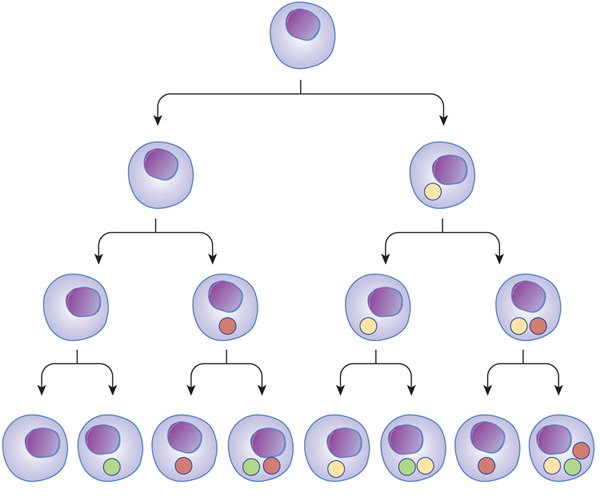Which Term Means A Change In The Structure Of Cells And In Their Orientation To Each Other?
Without cell partitioning, long-term tissue survival would be incommunicable. Inside every tissue, cells are constantly replenishing themselves through the process of partitioning, although the rate of turnover may vary widely betwixt different prison cell types in the same tissue. For instance, in adult mammal brains, neurons rarely divide. Nevertheless, glial cells in the encephalon continue to separate throughout a mammal'southward adult life. Mammalian epithelial cells also turn over regularly, typically every few days.
Neurons are not the only cells that lose their ability to carve up every bit they mature. In fact, many differentiated cells lose this ability. To help counteract this loss, tissues maintain stem cells to serve as a reservoir of undifferentiated cells. Stalk cells typically take the capacity to mature into many different prison cell types. Transcription factors — proteins that regulate which genes are transcribed in a prison cell — appear to be essential to determining the pathway item stalk cells take as they differentiate. For instance, both intestinal absorbent cells and goblet cells ascend from the aforementioned stalk prison cell population, but divergent transcriptional programs cause them to mature into dramatically unlike cells (Figure 1).
Whenever stem cells are called upon to generate a particular type of cell, they undergo an asymmetric jail cell sectionalisation. With disproportionate division, each of the two resulting daughter cells has its ain unique life form. In this case, one of the girl cells has a finite chapters for cell partitioning and begins to differentiate, whereas the other daughter cell remains a stem cell with unlimited proliferative ability.

Effigy ane: Transcriptional regulators can act at different stages, and in different combinations, through the path of jail cell development and differentiation.
Transcription factors tin can turn on at different times during cell differentiation. As cells mature and go through different stages (arrows), transcription factors (colored balls) can deed on factor expression and modify the cell in unlike ways. This change affects the next generation of cells derived from that cell. In subsequent generations, it is the combination of unlike transcription factors that can ultimately make up one's mind cell type.
Source: https://www.nature.com/scitable/topicpage/cell-differentiation-and-tissue-14046412/
Posted by: fifeabloome.blogspot.com


0 Response to "Which Term Means A Change In The Structure Of Cells And In Their Orientation To Each Other?"
Post a Comment